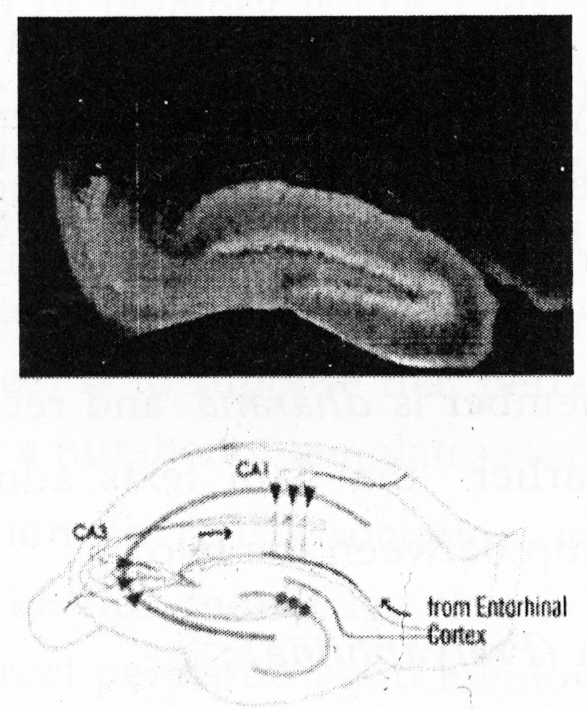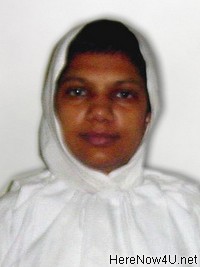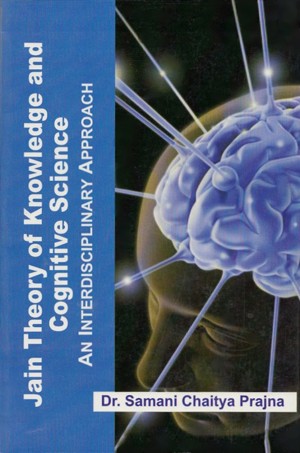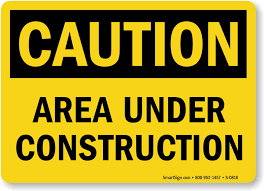3.7 Memory
Retention leads to the memory. Retention, impression, longing etc. are synonyms. Memory it has been defined as ' vāsanodbodhahetukā tadityākārā smṛtiḥ
The expression in form of 'that' is obtained on the awakening of impression is memory.[27] For example, 'that text', 'that object' etc. Three things are included in the present definition of memory i.e. there is some cause of memory, there is some object of memory, and there is some form of memory.
The cause of memory is the world of impressions. The impressions of whatever is seen, heard or read are formed in the neurons or brain cells of our mind and when, on finding some cause, they are awakened, we remember that thing. Hence the main cause of memory is the awakening of impressions. Psychologists have found that thought patterns used to recall the past and imagine the future is strikingly similar. Using functional magnetic resonance imaging to show the brain at work, they have observed the same region activated in a similar pattern. Whenever a person remembers an event from the past or imagines himself in a future situation. This challenges long-standing beliefs that thoughts about the future develop exclusively in the frontal lobe.
The object of memory is the world of objects. There can be no cognition in the absence of object, the object of direct cognition is the present object, similarly the object of memory is the object that has, been experienced. The impressions of the object that we have seen or heard directly, are formed in our mind and later on we come to remember them when they are awakened. Hence the object of memory is the object that has been experienced. The word tadityākara has been used in Pramāṇa Mimāmsa[28] which remember something in the form of 'that'
Jain logicians have regarded memory as valid and explained it as a kind of indirect instrument. They also have produced strong arguments and proofs to prove it. According to them, as direct instruments, being real are valid-similar is the case of memory too. Being real is valid.
The test of the validity of memory is the way we initiate our behaviour. Most part of our conduct and behavior is initiated on the basis of memory. For example, we drink water and our thirst is quenched; we eat food and our hunger is satisfied. On the basis of this previous experience, we drink water when we feel thirsty. We need not ask anyone else about it'. When everything that we do on the basis at memory is real, how can its validity be doubted? However, some people put forth the argument that memory sometimes goes wrong; it is not real, so how can it be regarded as valid? The solution is that sometimes even direct perception too may go wrong. For example, on seeing the rising dust. From a distance, it appears that there is smoke; or when someone is wearing yellow glasses, everything to him appears to be yellow.
Although everything is not yellow, it appears to be so, such a wrong or unreal knowledge may be acquired even by direct perception. If someone argues that we do not regard such wrong knowledge acquired by direct instruments as true direct perception but as fallacious direct perception. Well, this argument may be given in the context of memory too. In case of memory being false, the perception obtained by it may be said to be fallacious memory perception.
Cognition obtained by memory is valid as it has its own characteristic, cause, object and purpose. The basis of validity is not unproved, receiving the knowledge that has already been received the test of validity is non-dilatability (real knowledge) and that non-dilatability is there in memory. Hence it is valid.
Researchers at the Picower Institute for Learning and Memory at MIT report in the Jan. 24, 2007 online edition of Science[29] that they have created a way to see, for the first time, the effect of blocking and unblocking a single neural circuit in a living animal.
Fig No. 3.5. Brain Areas of Memory

This revolutionary method allowed Susumu Tonegawa, Picower Professor of Biology and Neuroscience, and colleagues to see how bypassing a major memory-forming circuit in the brain affected learning and memory in mice.
'The data strongly suggest that the hippocampal neural pathway called the tri-synaptic pathway or TSP, plays a crucial role in quickly forming memories when encountering new events and episodes in day-to-day life,' thus, it can be assumed the philosophical terms such as sansakāra and vāsanā has its physical existence in the form of hippocampal neural pathway explained in the science. According to Audi[30] in constructing the theories of memory there are at least two different but closely related notions we must keep track of memory, remembering and recalling. We remember and recall, roughly call back to mind in virtue of the power of our memory conceived as capacity firstly remembering of events, things and proposition, second, recalling those items. Memory as capacity in virtue of which remembering and recalling occur. As per this definition, it seems that memory as capacity to remember is dhāraṇā and recall is rather smṛti as explained earlier that Jain texts admit a cause and effect relationship between the two.
 Samani Chaitya Pragya
Samani Chaitya Pragya

